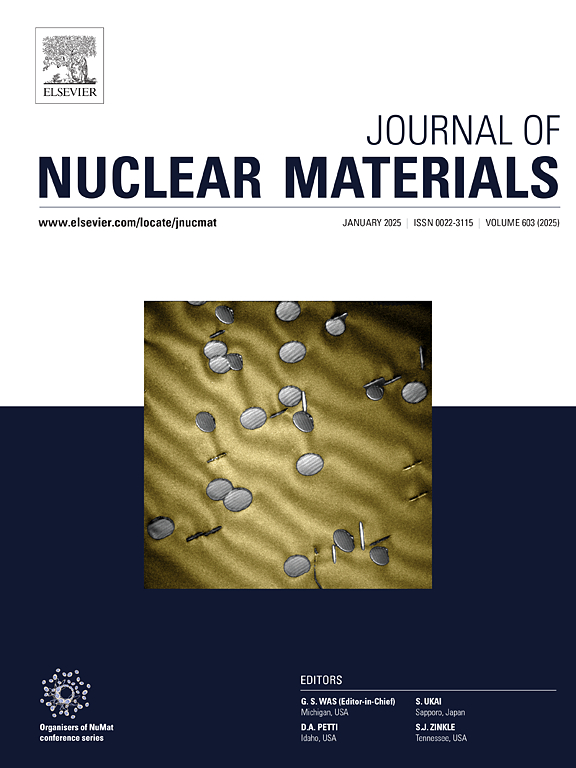Analysis of salt leakage due to corrosion-induced failure in molten salt thermal convection loop (MSTCL)
IF 2.8
2区 工程技术
Q3 MATERIALS SCIENCE, MULTIDISCIPLINARY
引用次数: 0
Abstract
A chloride-based molten salt reactors (MSRs) is preferred for fast neutron energy spectrum, which offers flexibility on choosing fissile materials, but an information of material corrosion is insufficient to develop MSR. The molten salt thermal convection loop (MSTCL) has been designed and constructed from stainless steel 316L to understand material-related issues relevant to MSR. However, during testing corrosion specimens, an event of the salt leakage and heater failure was detected in the weld zone of the loop. Microstructural observation with scanning electron microscopy showed wall thinning of the external surface near the perforated hole, intergranular attack in the internal surface, and unusual crevice and crack propagation in the intact weld zone. A root cause analysis has identified three molten chloride corrosion phenomena of impurity-driven intergranular attack, stress-assisted corrosion in crevice, and high temperature oxidation and chlorination in the atmosphere. It is confirmed that stress-assisted corrosion in crevice is responsible for the salt leakage. Residual stress due to welding combined with impurity-driven intergranular attack may lead to stress-assisted corrosion in crevice. Therefore, it can be inferred that crevice and residual stress in the internal surface are major causes of wall penetration of the loop and salt leak. Since both crevice and residual stress in the weld zone may originate from the manufacturing process involving welding, sufficient consideration should be given to the design of weld joint and the welding procedure to prevent these problem-causing factors from occurring.
求助全文
约1分钟内获得全文
求助全文
来源期刊

Journal of Nuclear Materials
工程技术-材料科学:综合
CiteScore
5.70
自引率
25.80%
发文量
601
审稿时长
63 days
期刊介绍:
The Journal of Nuclear Materials publishes high quality papers in materials research for nuclear applications, primarily fission reactors, fusion reactors, and similar environments including radiation areas of charged particle accelerators. Both original research and critical review papers covering experimental, theoretical, and computational aspects of either fundamental or applied nature are welcome.
The breadth of the field is such that a wide range of processes and properties in the field of materials science and engineering is of interest to the readership, spanning atom-scale processes, microstructures, thermodynamics, mechanical properties, physical properties, and corrosion, for example.
Topics covered by JNM
Fission reactor materials, including fuels, cladding, core structures, pressure vessels, coolant interactions with materials, moderator and control components, fission product behavior.
Materials aspects of the entire fuel cycle.
Materials aspects of the actinides and their compounds.
Performance of nuclear waste materials; materials aspects of the immobilization of wastes.
Fusion reactor materials, including first walls, blankets, insulators and magnets.
Neutron and charged particle radiation effects in materials, including defects, transmutations, microstructures, phase changes and macroscopic properties.
Interaction of plasmas, ion beams, electron beams and electromagnetic radiation with materials relevant to nuclear systems.
 求助内容:
求助内容: 应助结果提醒方式:
应助结果提醒方式:


